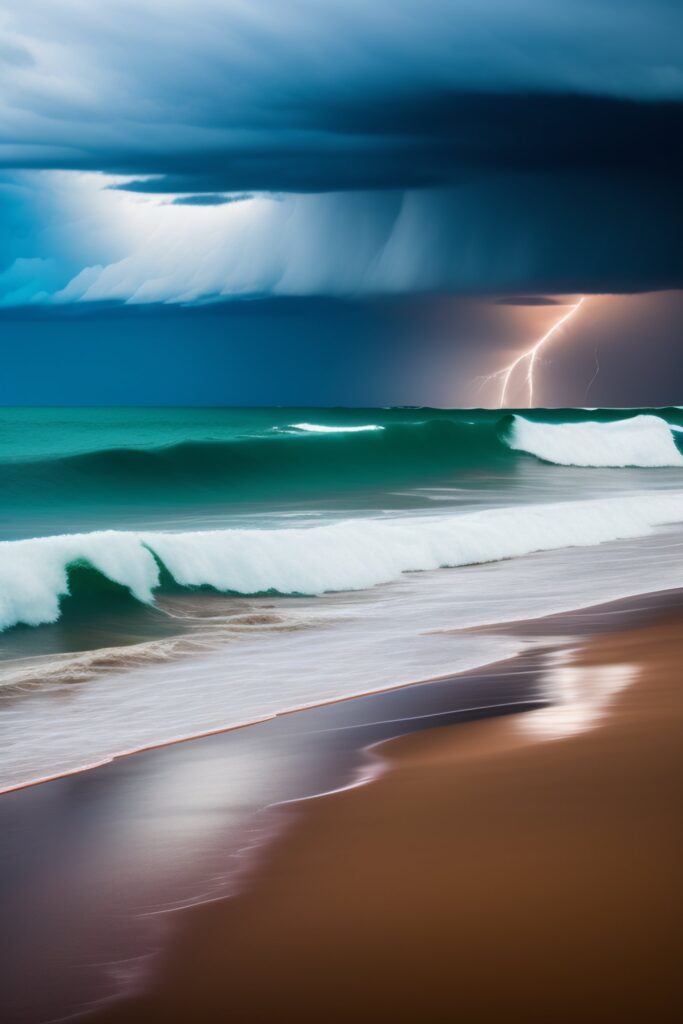
The Freak Waves of the WILD COAST
The Freak Waves of the WILD COAST: The freak wave or ‘hole in the ocean’ phenomenon is one of the most credible theories for many of the shipwrecks and mysterious disappearances of ocean-going vessels that have occurred along the Wild Coast. Some freak waves have been known to exceed 30 metres in height (higher than a ten-storey building) are what ship captains keep a wary lookout for when sailing off the Wild Coast.
To understand the theory of how these gigantic waves arise one must examine the winds, ocean currents and underwater topography of the Wild Coast.THE FREAK WAVES OF THE WILD COAST
The South Equatorial Current is born in the trade wind areas of the Indian Ocean. Assisted by forces generated by the rotation of the earth, it flows westward across the Indian Ocean until it strikes the east coast of Africa where it is deflected southwards.
Around Madagascar this enormous flow of water splits into two before joining up again just north of Durban, and from there continues southwards as the Agulhas Current. This mighty current, between 100 to 160 kilometres in width and with a depth of over 300 metres, reaches a velocity of between 8 and 11 kilometres per hour near Port St Johns.
The continental shelf along this section of southern Africa widens to some 32 kilometres seawards off Durban, then narrows to about 8km off Port St Johns, before extending out to more than 30km off East London.
The combination of underwater topography and the depth of the Agulhas Current ensures that the main flow of the current is generally seaward of the continental shelf. Only infrequently does the current flow over the continental shelf towards the land. It attains maximum velocity just off the continental shelf in the area between Port St Johns and East London.
Wild Coast Gallery by AI




During the summer months (November to May), a low-pressure zone generally exists over the interior of South Africa whilst a high-pressure zone extends across the Indian Ocean to the south of Madagascar. This results in the prevailing winds along the south-eastern coastline of southern Africa being easterlies to north-easterlies which, blowing in the same direction as the current, contribute to its velocity.
During the winter, from May until the end of September, cold fronts move rapidly up the southeastern coastline, causing strong south-westerly winds that blow parallel to the coastline, lasting for up to two days.
The arrival of cold fronts is heralded by an inshore counter-current that begins some six hours before the arrival of the front itself. This current, flowing at a speed of 1 to 2 knots, follows the direction of the coastline but remains inshore of the Agulhas Current. (Ships travelling towards Durban often use this counter-current to help them on their way.)
Waves along this coastline are a combination of local and storm-generated swells. Some waves originate up to 2000km away, deep in the Atlantic, and acquire maximum height and velocity by the time they reach the coastline.
These wave trains are of different wavelengths and frequencies all travelling in the same direction. On encountering the Agulhas Current their wavelength shortens and their size increases, and occasionally they superimpose upon one another, which further increases their amplitude.
Every so often, moving against the Agulhas, these waves combine, resulting in a wave of enormous height but of a very short duration with a long and abnormally deep trough. This is the ominous freak wave!
Thank you to author John Costello for the comprehensive explanation and warnings about The Freak Waves of the WILD COAST.
We can get you right out there in amongst those freak waves if you like. Contact us on Umzimkulu Adrenalin website anytime you like.
